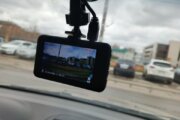If you’re celebrating the return of spring by pulling out your golf clubs, take time first to learn how to prevent and treat golf injuries. You could end up with a common injury such as “golfer’s elbow” if you try to mimic the perfect swing of golf pros without taking into account the limitations of your own body.
There’s a great deal of variability in the golf swing, and we all have different grades of flexibility and strength. A tall, thin person will have a different swing than a short stout person, for example. The best way to prevent injuries is to work with a golf professional to make sure you’re using your body properly when you swing.
Starting off slow is also important for preventing injuries. When you go to a golf range, warm up first by hitting nice, easy balls to get your muscles loose and warm. Gradually increase your force and speed. This will not only help to protect your elbow, but also your back, which can become injured if you use a lot of force suddenly to twist your body as you swing.
[See: 8 Lesser-Known Ways to Ruin Your Joints.]
What Is Golfer’s Elbow?
Golfer’s elbow is an inflammation of the tendons that attach the forearm muscles to the inside of the bone at the elbow. The forearm muscles and tendons become damaged from overuse, such as repeatedly swinging a golf club. This leads to pain and tenderness on the inside of the elbow.
A person typically takes more than 100 swings in a round of golf — a great deal of force goes into hitting a golf ball, and that takes a toll on the tendons in the elbow.
[See: 7 Exercises You Can Do Now to Save Your Knees Later.]
How Is Golfer’s Elbow Treated?
The first steps to take if your elbow hurts after playing golf are rest, ice and over-the-counter pain relievers. Applying heat, massaging the area and wearing an elbow brace may also help. Consult your doctor if your elbow continues to hurt. He or she may recommend physical therapy or at-home exercises to strengthen the elbow. A cortisone injection may relieve discomfort from golfer’s elbow as well.
If none of these measures work, the next step is an X-ray or MRI to see how much damage has been done to the elbow. Treatment may include injections of growth factor or platelet-rich plasma injections. PRP involves drawing a small amount of your blood, spinning it down and injecting it into the tender area. Generally, tendons have a poor blood supply, which means they heal slowly. Injecting the plasma directly into the tendon allows it to heal more quickly.
Surgery to remove the damaged tissue may be considered as a last resort if other treatment options are not successful.
[See: Your Guide to Over-the-Counter Pain Relief.]
By starting off slowly, building up gradually and being realistic about what your body can do on the golf course, you can protect yourself against injury. Getting someone to help you use proper mechanics for your body and natural swing will get you the best results and prevent injury.
More from U.S. News
9 Sports Injuries That Sideline Kids
8 Lesser-Known Ways to Ruin Your Joints
8 Health Challenges Facing Olympic Athletes
Don’t Let ‘Golfer’s Elbow’ Slow Down Your Golf Game originally appeared on usnews.com







